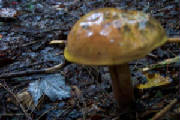
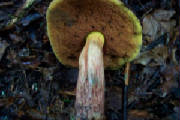
Boletus longecurvipes: Yellow-orange to brown-orange
caps often, as seen here, with green tones in wet weather.
Pores pale yellow fading to gray, green gray or brown.
Location: Lindy Run Trail, Canaan Mt, MNF, WV.
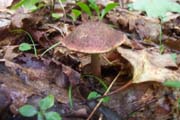
Boletus chrysenteron, Red-cracked Bolete: Olive-brown
cap with red between cracks, yellow pores and reddish-yellow
stems. Location: Tea Creek, MNF, WV.
|
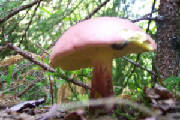
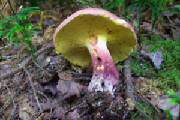
Boletus bicolor: Bi-colored Bolete. Dark to Rose Red cap
and stalk with bright yellow pores. Location: Plantation
Trail, Canaan Mt, MNF, WV.
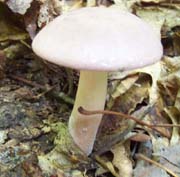
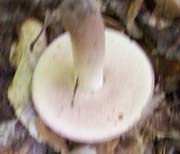
Tylopilus chromapes, Chrome-footed Bolete: Beautiful
creamy pink and white with yellow foot (not shown). May -
October. Edibility good. Location: Fayetteville Tr, New
River Gorge National River, WV. |
Strobilomyces floccopus: Old Man in the
Woods. Location: Gunpowder Loop Trail above Hemlock Gorge,
MD. Photo by Ken Clark.
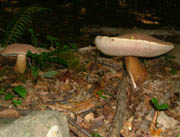
Tylopilus
rubrobrunneus, Reddish-brown Bitter Bolete: Purple
to Brown cap turning cinnamon w/age w/white pores which turn
pink to pinkish-brown with age. brown stem. Unpalatable when
cooked. Location: Seneca Creek Back Country, MNF, WV. Photo
by Jim Kirk. |
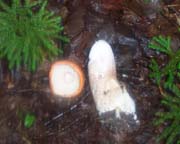
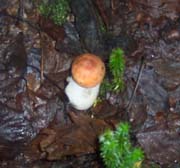
Leccinum scabrum,
Common Scaber Stalk. The most common Bolete. Edible.
Location: Tea Creek Tr., MNF, WV.
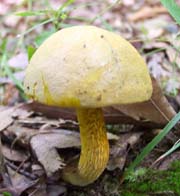
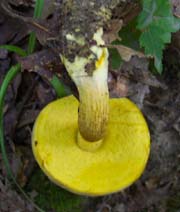
Pulveroboletus ravenelii, Powdery Sulfur Bolete: Cap
and stem "powdery" when young, coming off in one's hand.
Pores bright yellow bruising blue. Location: Fayetteville
Tr, New River Gorge National River, WV.
|
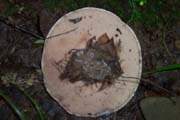
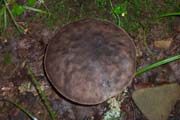
Tylopilus fellus, Bitter Bolete: Dark brown cap, pink
to pinkish-brown spores and yellow stalk with red netting.
As the name implies, not palatable. Location: Tea Creek
Backcountry, MNF.
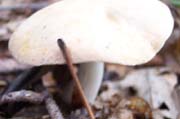
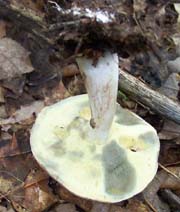
Boletus pallidus, Pale Bolete: White to off-white with
pale yellow spores that bruise gray to green-blue. Good
edibility. Location: Endless Wall Tr, New River Gorge
National River, WV. |

